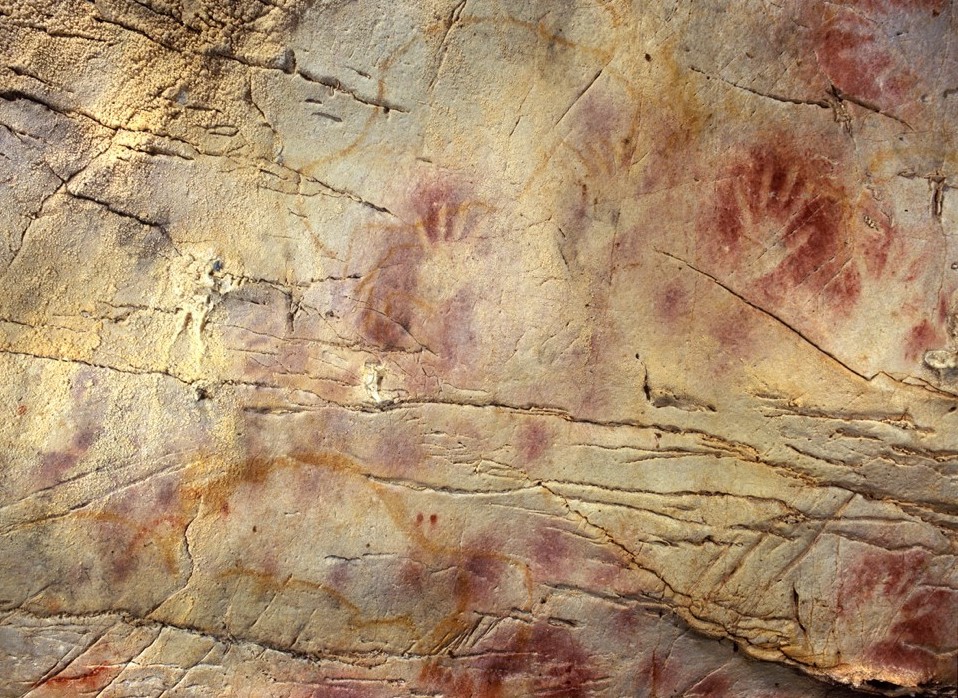Did a Magnetic Field Reversal Doom Neanderthals?
I remember exactly where I was when I first learned about magnetic field reversals: sitting in a lab as an undergraduate student in a geoarchaeology class. I knew that our planet was essentially a huge magnet, thanks to the motion of molten metals in its outer core. But the idea that the Earth’s magnetic fields could become unmoored and wander, or reverse altogether, was alarming.
I had questions in mind that I was too embarrassed to ask out loud: Would I notice if it happened? Would we all die? Would fridge magnets still work?
I suspect many people are similarly surprised and full of questions—which is probably why news stories about magnetic field reversals do so well.
Two weeks ago, a paper was published in the journal Science claiming that a magnetic field reversal may have had something to do with the demise of Neanderthals. A quick Google search of the terms “magnetic field” and “Neanderthals” turns up multiple pages of dramatically titled hits from news outlets, including this gem from The U.S. Sun “MAGNETIC MADNESS: Magnetic catastrophe ‘that wiped out Neanderthals’ is due to happen AGAIN, scientists warn.”
I wrote my doctoral dissertation on aspects of Neanderthal extinction, so I will weigh in on all this.
The magnetic field that wraps around the Earth protects it from dangerous radiation from the sun and other cosmic sources.
Very occasionally, for reasons that researchers still do not fully understand, that magnetic field can weaken and become unstable, and its north and south poles can flip. The last time this happened on the Earth was around 42,000 years ago: an event called the Laschamp excursion. For a brief blip lasting a few hundred years, the North Pole was the South Pole and vice versa.
The new publication in Science suggests that the field weakening leading up to this event led to key changes in the global environment, which “caused major environmental changes, extinction events, and transformations in the archaeological record.” The authors suggest that the disappearance of Neanderthals from the fossil record around this time may be a sign of one of those extinction events.
The Earth would have experienced some particularly punishing levels of cosmic radiation and increased temperatures.
The main source of data for this research was a massive kauri tree in New Zealand. Giant kauri trees can live for millennia; this one lived for approximately 2,000 years during the Laschamp excursion. When the tree died, it fell and was buried in the boggy soil beneath, where the tree was protected from decay and the chemical records in its trunk were preserved. Researchers used dendrochronology, or tree-ring dating, combined with radiocarbon dating of the trunk, to create a detailed record of the timing of the excursion.
The researchers then connected that timing to seemingly separate biological, climatic, and archaeological events noted by other scientists.
The team also used sophisticated computer model simulations to predict what the global climate might have been like when affected by a weakened magnetic field. There are other datasets that help scientists reconstruct the climate around that time, but, significantly, a weakened magnetic field would result in major changes to the concentrations of ozone in our atmosphere. Diminished ozone layers would have meant increased ultraviolet radiation and ionizing radiation, both of which are damaging to living organisms. This information had not previously been a part of climatic reconstructions.
The team also factored in unusual chemical deposits identified in ice cores, which were most likely produced during a grand solar minimum, or period of low sunspot activity, also around 42,000 years ago. During solar minima, the Earth gets bombarded by more galactic cosmic rays. When the research team combined that with a reduced concentration of ozone thanks to the geomagnetic shift, the model results indicated that the Earth would have experienced some particularly punishing levels of cosmic radiation and increased temperatures.
So, are these atmospheric catastrophes the reason for the Neanderthals’ extinction? The answer is complicated.
Thanks to specimens available from the fossil record, there are reasonably accurate reconstructions of Neanderthal body mass and daily energy expenditure. While doing research for my dissertation, I calculated the average daily calories a Neanderthal population would likely need relative to the same for Homo sapiens.
The bottom line of these calculations is that it was simply more energetically costly to be a Neanderthal than it was to be a Homo sapiens. Models of these two populations put into the same environment suggested that in nearly every circumstance, unless the Neanderthal population was given some extraordinary advantage, over time Homo sapiens would win out. Any additional advantage given to Homo sapiens, such as more efficient tools, sped up the rate of the Neanderthals’ extinction.
The authors of the article in Science write that the areas of the globe most affected would have been at the equator and latitudes up to 40 degrees (north or south). Neanderthals occupied a large range of territory throughout Europe, much of which is above the 40-degree mark. So, it might not have been such a big deal for them, given where they lived.
However, by 42,000 years ago, Homo sapiens populations would have been living in many of the environments most affected by solar radiation (in Africa and elsewhere, between the equator and 40 degrees). It is very possible that the events triggered by the Laschamp excursion, combined with the effect of the grand solar minimum, may have made that region much less livable. This could have caused some Homo sapiens to flee and move into what had previously been mostly Neanderthal territory. Then, Neanderthal population success would certainly have been threatened.
The new article is fascinating, and it is entirely possible that a disruption of the Earth’s protective magnetic field may have added to an existing series of circumstances that were not in the Neanderthals favor. But headlines trumpeting that a magnetic pole switch killed off our ancient relatives are vastly oversimplifying the tremendously complex system in which Neanderthals and our Homo sapiens ancestors lived.
Life is messy—it always has been.

































